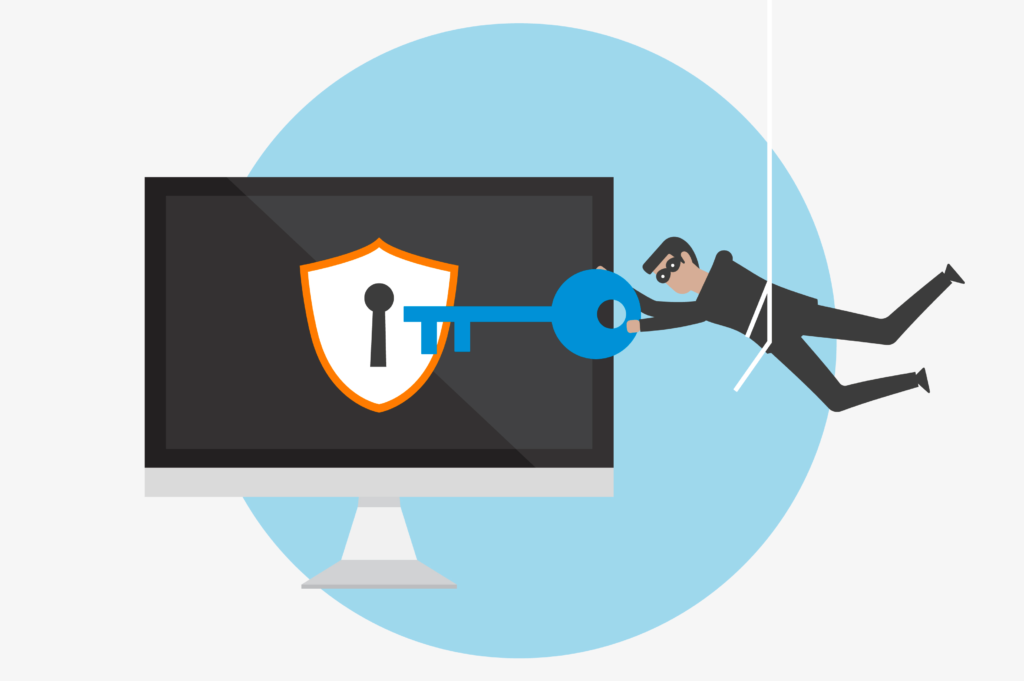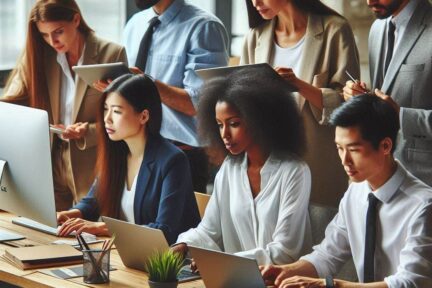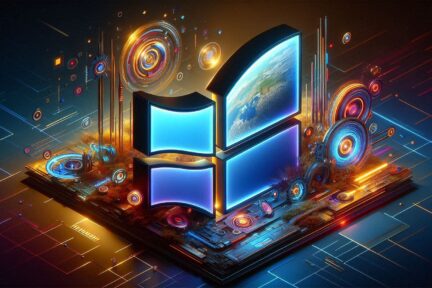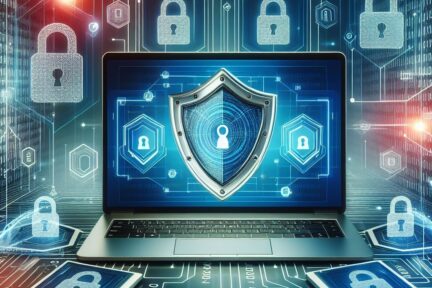Securing home WiFi is critical. In today’s modern world, technology has become an integral part of our lives, and maintaining a secure home network is more crucial than ever. With the increasing prevalence of cyber threats such as phishing and smishing, it is essential to safeguard your personal data from hackers. While workplaces often have robust security measures in place, many individuals lack similar safeguards in their homes. However, with the rise of remote work, protecting personal and company data from potential breaches is vital.
Statistics indicate that around 46% of businesses experienced at least one cybersecurity incident within two months of transitioning to remote work. The good news is that there are abundant resources available to enhance home network security. Following some straightforward steps can significantly reduce the risk of a data breach in your home.
Outlined below are some key tips for securing your home network, offering valuable insights into best practices:
The initial step in securing home WiFi involves customising the default login credentials. This entails changing the passwords and usernames of your router and connected devices. Default credentials are often well-known to hackers, making it easier for them to gain unauthorised access to your data. Personalising these credentials establishes a crucial first line of defence for your home network.
Encryption plays a pivotal role in safeguarding your data by encoding information in a manner that only authorised individuals can decipher. Activating encryption on your home network is essential to protect your data from interception and unauthorised access. Most modern routers support encryption protocols like WPA2 or WPA3. It is important to ensure that you utilise the latest encryption standard, such as WPA3, which is employed by Wi-Fi 6 routers, for optimal security.
Firmware refers to the software that operates your router and other connected devices. Manufacturers frequently release firmware updates to address security vulnerabilities and introduce new features. Keeping your router’s firmware up to date is crucial for maintaining the security of your home network. You can typically check for firmware updates through the router’s web interface or the manufacturer’s website. Setting a reminder to check for updates at least once a month is recommended to ensure you don’t overlook this critical aspect.
A firewall serves as a network security system securing home WiFi that monitors and controls incoming and outgoing network traffic. Enabling a firewall on your router provides additional protection for your network. It aids in defending against malicious traffic and unauthorised access attempts. Most modern routers come equipped with a built-in firewall, which can be activated through the router’s web interface, bolstering the security of your home network.

Manufacturers often enable various services by default on routers, such as file sharing, remote management, and media streaming. However, these services can pose security risks if they are not necessary for your network. Disabling any unused services significantly reduces the chances of hackers exploiting them to gain unauthorised access to your home network. It is advisable only to enable the services essential for your network’s smooth operation.
Enhancing your Wi-Fi network’s security is paramount for your overall home network security. Implement the following measures to fortify your Wi-Fi network:
Creating and maintaining strong passwords is a fundamental aspect of home network security. Weak or easily guessable passwords can render your network vulnerable to brute-force attacks. Ensure that strong passwords protect your router and other connected devices. A strong password should be at least 12 characters long, combining uppercase and lowercase letters, numbers, and symbols. Avoid using easily guessable information, such as birthdays or common phrases.
If you frequently have guests, such as your children’s friends, who require Wi-Fi access, consider setting up a separate guest network. A guest network is a distinct Wi-Fi network that provides internet access to guests without compromising the security of your primary network. This segregation helps protect your primary network from potential security threats that may arise from guest devices.
Physical access to your router and connected devices can pose a significant security risk. To mitigate this risk, ensure that your router is located in a secure area, such as a locked cabinet or a room with limited access. Additionally, disable physical access to the router’s web interface, especially when there are guests or children present who might unintentionally modify settings, compromising the security of your network.
You need the best IT support in London. Technology is complicated and expensive. It’s so hard to maintain everything and know what to do when something breaks or goes wrong. IT problems can put a damper on your day. They’re frustrating, time-consuming, and seem like a never-ending cycle of issues.
Penntech’s average NPS score over 90 days is 84. The average Net Promoter Score (NPS) for IT Managed Service Providers (MSPs) can vary. Still, an NPS of around 50 is considered excellent in this industry, with scores above 70 exceptional and rare.
We offer our services on a trial basis for the first three months because we’re confident in our delivery and approach.
Penntech offers a wide range of IT services, from strategic project management to 24/7 remote support, ensuring all your IT needs are always covered.
We provide advanced cybersecurity measures and expertise, including penetration testing services and Cyber Essentials, to protect clients from cyber threats.
We offer Clients the ability to scale IT services up or down based on their needs. This flexibility is crucial for businesses that experience seasonal changes or rapid growth.
Other providers often enforce their preferred IT stack, but we don’t, as IT is not a one-size-fits-all solution.
We ensure our Clients’ business continuity through robust disaster recovery and backup solutions.
With experience in various verticals and industries, Penntech understands different businesses’ unique IT challenges and can provide customised solutions..
Contact us today or explore the range of support packages on offer.


Business owners often have to wear many hats, from handling HR and marketing tasks to managing the finances. One task…

Cool Windows 11 Features That May Make You Love This OS
Microsoft released the Windows 11 operating system (OS) over a year ago. It was well-received mainly with reviews as stable…

6 Ways to Prevent Misconfiguration (the Main Cause of Cloud Breaches)
Misconfiguration of cloud solutions is often overlooked when companies plan cybersecurity strategies. Cloud apps are typically quick and easy to…

4 Proven Ways to Mitigate the Costs of a Data Breach
No business wants to suffer a data breach, but unfortunately, it’s difficult to avoid them in today’s environment. Approximately 83%…

The benefits of AI include advancing our technology, improving business operations, and much more. Adoption of AI has more than doubled…

Leading Password Managers for Personal and Business
We hope that your business is already considering a password manager system, but there’s still the matter of finding the…

What’s Changing in the Cybersecurity Insurance Market?
Cybersecurity insurance is still a pretty new concept for many SMBs. It was initially introduced in the 1990s to provide coverage for large enterprises. It covered things like data processing errors and online media.

What are the advantages of implementing Conditional Access?
It seems that nearly as long as passwords have been around, they’ve been a major source of security concern. Eighty-one…

Essential Steps to Cyber Essentials Compliance
In the ever-evolving digital landscape, ensuring cybersecurity compliance is paramount for any organisation to safeguard against cyber threats. Enter “Cracking…

Computer Security Software to Safeguard Your Digital World
In today’s fast-paced digital landscape, safeguarding your online presence is non-negotiable. Stay ahead of cyber threats with our carefully curated…

The Power of Managed Services Providers in the IT Industry
In the fast-paced realm of the IT industry, navigating the complexities of technology while ensuring seamless operations can be daunting…

Streamlining Your Business with Managed IT Service Solutions
Is your business struggling to keep up with the ever-evolving technology landscape? Look no further than top-notch managed IT service…

Growing Your Business with Managed IT Services
Are you tired of struggling to keep up with the ever-changing IT world? Looking for a reliable solution to manage…

Maximising Efficiency: The Key to Building an Effective Network Infrastructure
In today’s fast-paced and interconnected world, building an efficient network infrastructure is paramount for businesses of all sizes. A well-designed…

10 Essential Network Security Measures to Protect Your Business
As cyber threats continue to evolve, it has become imperative for businesses to prioritise network security. With a single breach…

The Top 10 Cybersecurity Companies You Need to Know
In a world where cybersecurity threats loom, protecting your digital assets has become more critical than ever. But with countless…

Finding the Right Managed IT Services Provider for Your Business
Are you struggling to find the right managed IT services provider for your business? Look no further! This comprehensive guide…